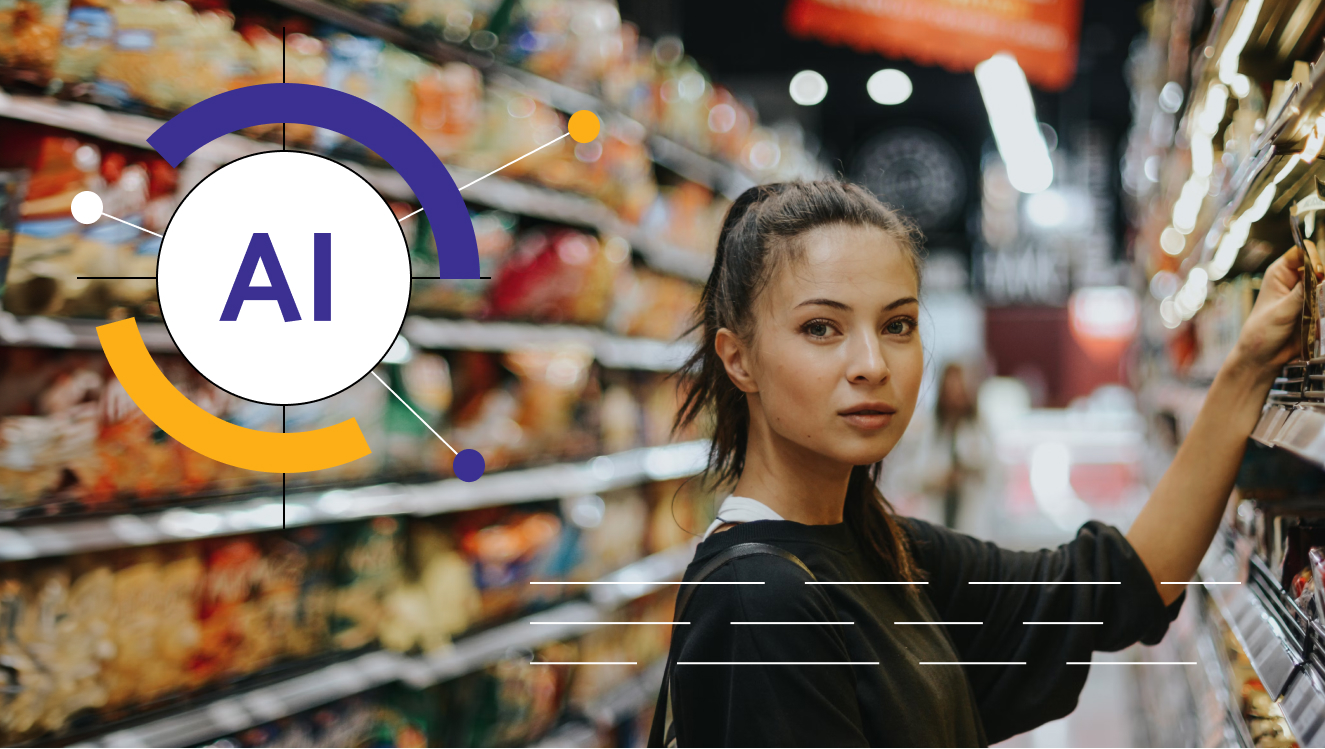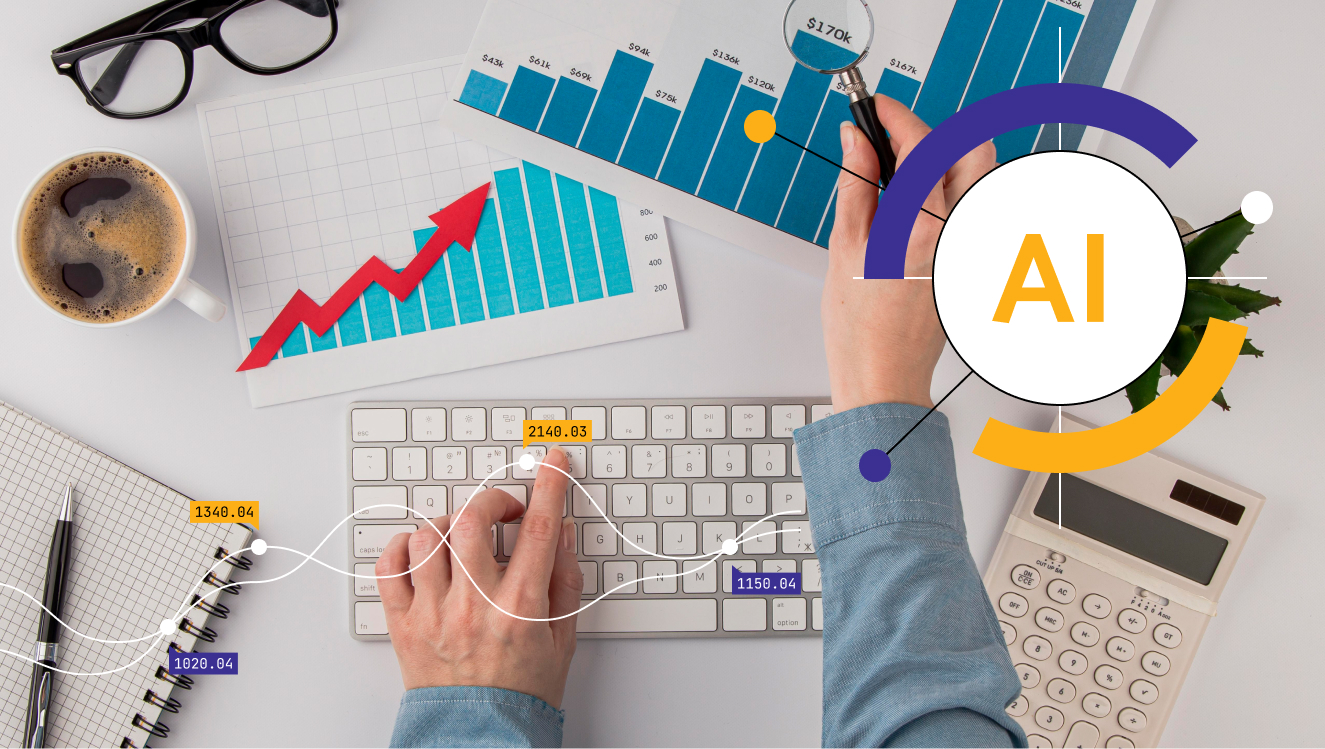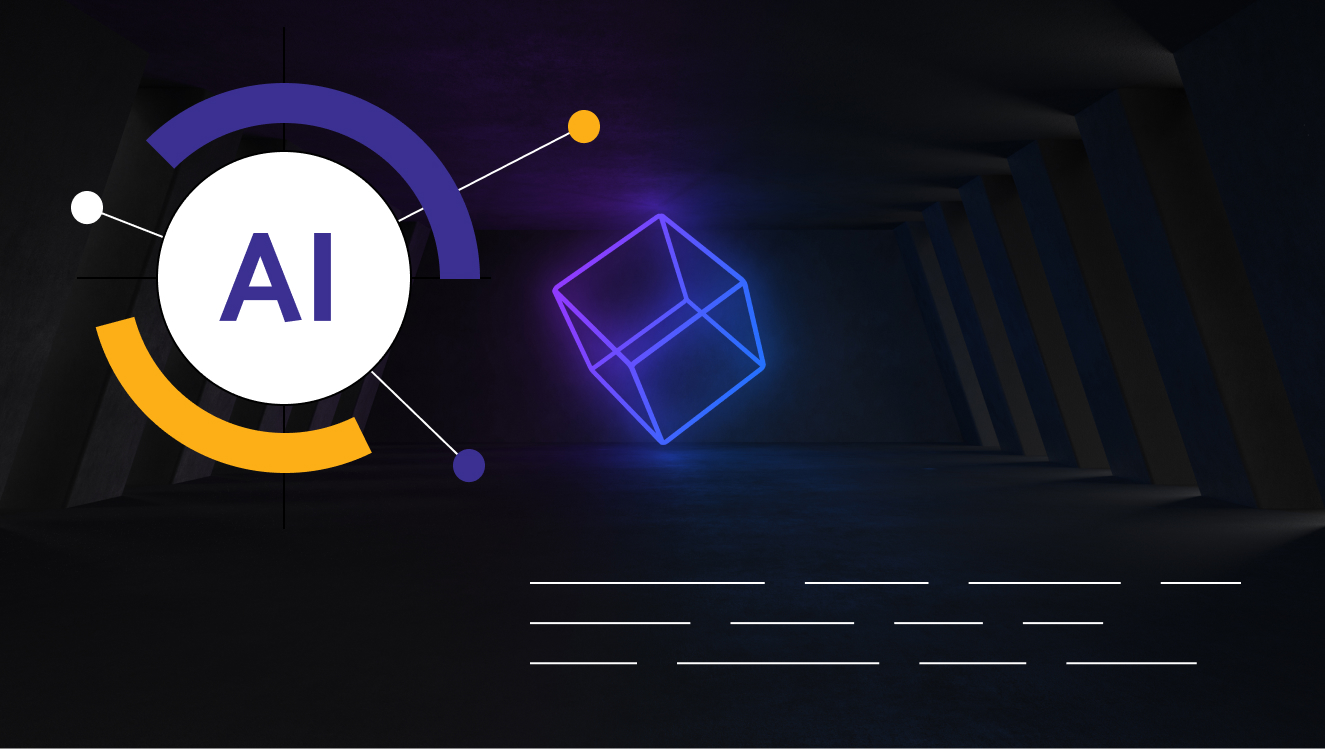AI use cases in retail
How AI is ruling the retail industry helping business owners save money, optimize processes, and increase revenue? Some interesting applications real-time examples, and more intriguing insights.

Jagadeesan
Feb 26, 2024
|8 mins

Top 7 use-cases of AI in retail
AI is everywhere. This applies to the retail industry too. Following are the most and least common use cases of AI in the retail industry.
Demand forecasting
Imagine a supermarket owner thinking about what would sell more on weekends, stocking that to improve sales. This is demand forecasting. But manual estimations don’t come in handy for a large retailer with multiple branches and way too many products, brands, and categories. On top of that, there are changing customer demands due to different reasons.
A practical approach is using AI-based forecasting. These models do a better job in demand forecasting by extracting trends, seasonality, and cyclic patterns out of your historical data spread over a period of time. The trench-level insights it generates can tell you how your demand increases or reduces over time, how its behavior repeats.
AI-based forecasting models can process loads of data and draw forecasting reports in minutes under different dynamic conditions—like seasonality, economic factors, competitor trends, and other unpredictable factors.
So, the business will never reach the point of overstocking or a lost sale opportunity.
This being said, demand forecasting is also important for mid-sized companies where inventory management is crucial—so as to prevent product cannibalization.
Real-time example
Companies like Walmart have their centralized forecasting service which generates regular forecast reports for numerous products, stores, and locations. This is how they can keep up with changing demands despite selling 1000s of products in every store.
Ikea is using demand forecasting tools to manage its supply chain and store planning of all of its stores and products.
Inventory management
Inventory management and demand forecasting are like two sides of a coin. The former is about what to stock, how much, and when. The latter is about what customers might want so it can be made available on store shelves.
Smart inventory management means the right products being stored, facilitating rapid movement of them, and minimizing waste. This can help the supply chain and transportation industry in reducing its carbon footprint and maintaining sustainable operations.
An inventory requires multiple pieces of equipment and machinery for movement and storage. Predictive maintenance, an AI-based application can assess the machinery’s health which helps in maintaining them in ideal working conditions and saving repair costs.
Also, AI-based technologies paired with real-time sensors and cams to track and maintain stored products.
Real-time example
Retail clothing company Zara uses AI to optimize its supply chain in the following ways - monitoring inventory levels, minimizing wastage, and optimizing travel routes.
Recommended read: AI in finance
Product recommendation
This use case is crucial for e-commerce and retail stores to connect the right products with the right customers on perfect occasions.
It’s about sending tailored product recommendations and discounts by analyzing customers' shopping patterns and behaviors. This attracts more business while keeping the customer engaged with the brand. That’s how big retail brands make use of the Diderot effect and increase sales and order value.
These recommendation systems are intelligent enough to offer suggestions even for new customers with no shopping history—based on data like age, location, seasonality, gender, etc.
This use case works for eCommerce businesses too. When someone checks out a product, adds it to the cart, or buys it, products from related categories can be suggested later.
Real time example
Retail shops like Target and Walmart have developed their own product recommendation systems. They are trained with loads of customer data, product information, and current and future trends to recommend the right products with customers.
Target also uses predictive analytics system to analyze historical purchase data so they can hyper-target their customers with the right products before they intend buying them.
Personalization
The retail industry must focus on improving customer experience to retain them in a competitive market. This is where personalization helps. From personalized marketing campaigns and product recommendations to customer service, this is one of the potential AI use cases in retail.
With AI techniques like predictive analytics, you can segment customers into groups and target them with hyper-personalized content, product, or omni-channel sale campaigns.
Similarly, AI chatbots can be set up to offer individualized assistance from navigating through the store to finding products to seeking support. Or setting up an in-store or out-store recommendation based on products the customer intends to buy.
All of this makes customers feel more valued and seen and becomes a satisfactory brand experience.
Real-time example
Nike has a mobile application through which they are personalizing customer experiences. For instance, you can check if your shoe fit is correct or not. Nike also collects lots of customer data through apps, stores, online shops, etc to offer tailored product recommendations, fitness tips, and special event passes to its premium customers.
Customer sentiment analysis
Many brands know that their frustrated and angry customers leave for their competitors. But why can’t they preempt it or uncover the reason behind their leaving? It is difficult to trace the customer touchpoints nor take timely actions, given the vast amount of data. Customer sentiment analysis can help here when the data load goes beyond what a support team can analyze on their own. Natural language processing techniques helps these systems understand texts like human beings and glean insights out of them.
What data does it analyze? Any customer opinion in the form of reviews, survey responses, UGC, social media posts and comments, etc.
What can it measure? Polarity of comments—negative, positive, or neutral.
Subjectivity - what the comments are about? Quality, customer service, price, etc.
What are the emotions behind? Satisfaction, happiness, frustration, mixed feelings, etc.
Overall, the voice of the customer and where the brand stands can be measured using sentiment analysis—something entirely erratic.
So, you can find major and minor concerns instantly, work on them, and respond before the negativity aggravates. This gives you the power to know what your customers want, what they don’t like, and why and change them to keep building momentum.
These in-depth insights into volumes of data in different formats are impossible to parse manually.
Real-time example
One of the biggest global electronic brands, Apple uses sentiment analysis to analyze their customers' tweets with the help of machine learning and NLP. Through this, they understand what they think about their new features, design, and understand their strong and weak market points, and carve their position in the market.
Price optimization
Price optimization is an important technique for brick-and-mortar shops to improve profits. Many E-commerce businesses have already nailed this and modified their pricing strategy to suit the demand, customer, occasion, demographics, etc.
It’s about testing customers with different prices to the point where they will be ready to buy the product. Based on data like customer records, buying history, and market trends.
With the help of AI-based tech, companies can constantly process the above data and make changes to maximize profits. This establishes a balance between demand, sales, and profits without compromising on any.
These ML models can be further optimized to obtain more accurate data. For instance, feed competitor pricing, test for small batches of products, check with different scenarios, and more. This is how AI can help retail stores make the most despite dynamic markets and changing trends.
Real-time example
Dynamic pricing using artificial intelligence is already used by many players across markets, like Uber and AirBnB. Fashion brand Zara uses AI to set smart entry-level prices and let them dynamically change based on how customers react and many other conditions—which helps them make high-profit margins and sell only 15-20% of clothes at discount prices.
Business process automation
AI brings in the scope to automate manual processes and make them efficient. For instance, store planning, resource allocation and management, stocking estimations, accounting, and more.
This introduction to robotics and automation reduces the staffing need while getting the work done with more accuracy. With minimal resources, you can ensure optimal servicing and operations. By automating them with AI-based solutions, businesses can become more resilient, carrying out operations with getting affected by external factors.
Another interesting use case is sustainability. By optimizing supply chain operations, AI helps companies upkeep their commitment to environmental wellness.
For instance, retail chains like Zara monitor the demands of its 2k+ shops consistently and smartly stock them up from the nearby SKUs.
AI also plays an effective role in preventing fraud—internal fraud and theft like shoplifting by analyzing data from vigilance systems, shelf monitoring cams, etc.
Final thoughts
The retail industry is booming again and with more vigor post-COVID era. After being inactive for years, the industry has learned to adapt to modern requirements and re-align their strategies respectively.
In 2023, the market size value of AI in the retail industry was worth $7.14 billion and is expected to reach $55.53 billion within 2030 with a CAGR of 34.1%. This shows how the expeditious growth of AI in this sector and the willingness of retailers to embrace new technologies for a steady growth.
AI stands on top of all these tech investments, as the use cases listed above are otherwise common challenges of most growing retail companies. They either do them manually or with outdated methods with the least accuracy.
With suitable AI technology, these businesses can change focus on what’s more important, which is being relevant to their customers, leaving a memorable impression, and maximizing profit margins. By building scalable AI models, you can stop worrying about excessive data and become truly data-driven.
The start of this new path can be scary. You will need the right data partner who understands your industry, business, and most importantly the evolving AI that datakulture can do for you.
Set up a free consultation call with our subject matter experts and uncover the value of your data.
Improve customer experience with AI
Contact us

